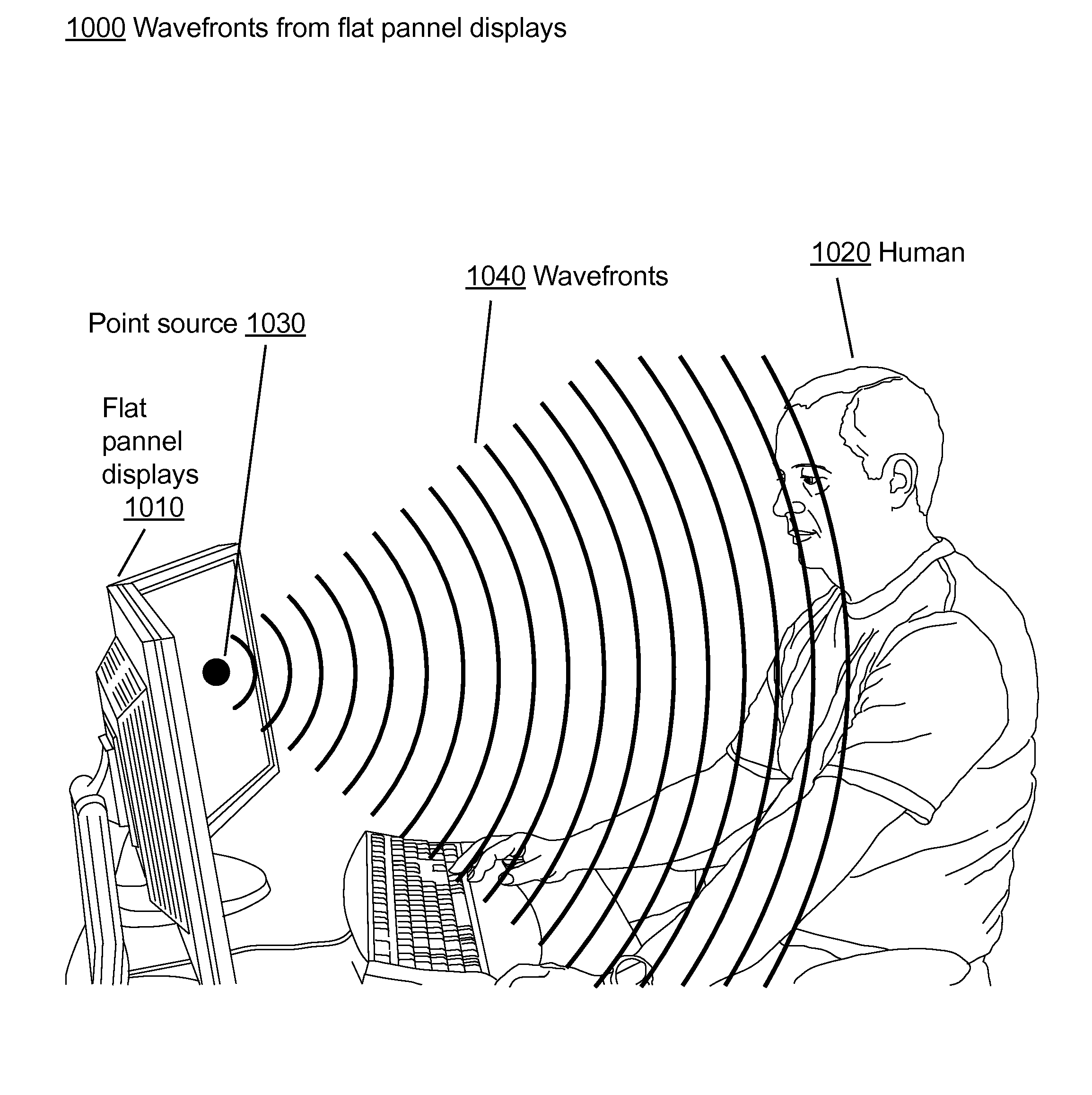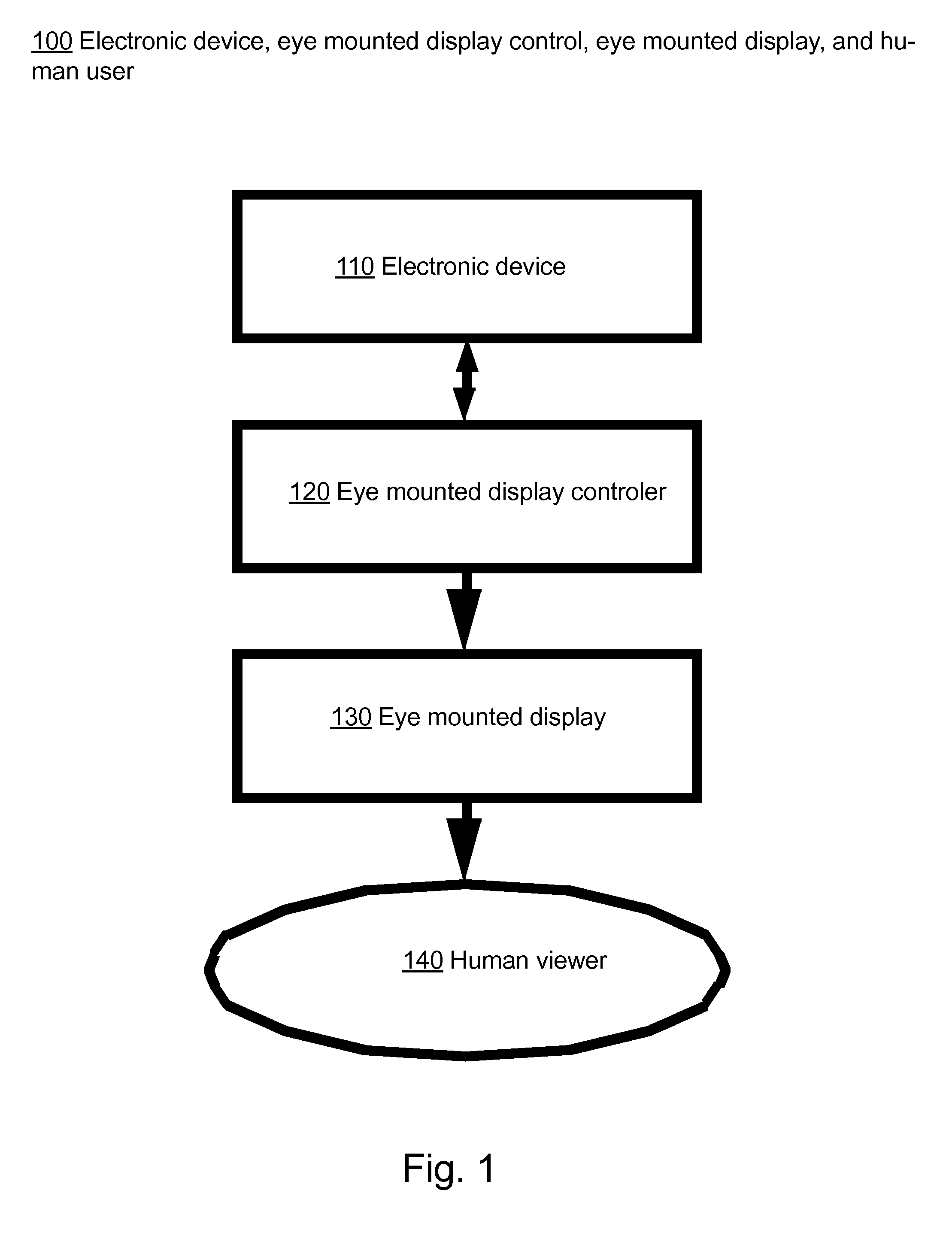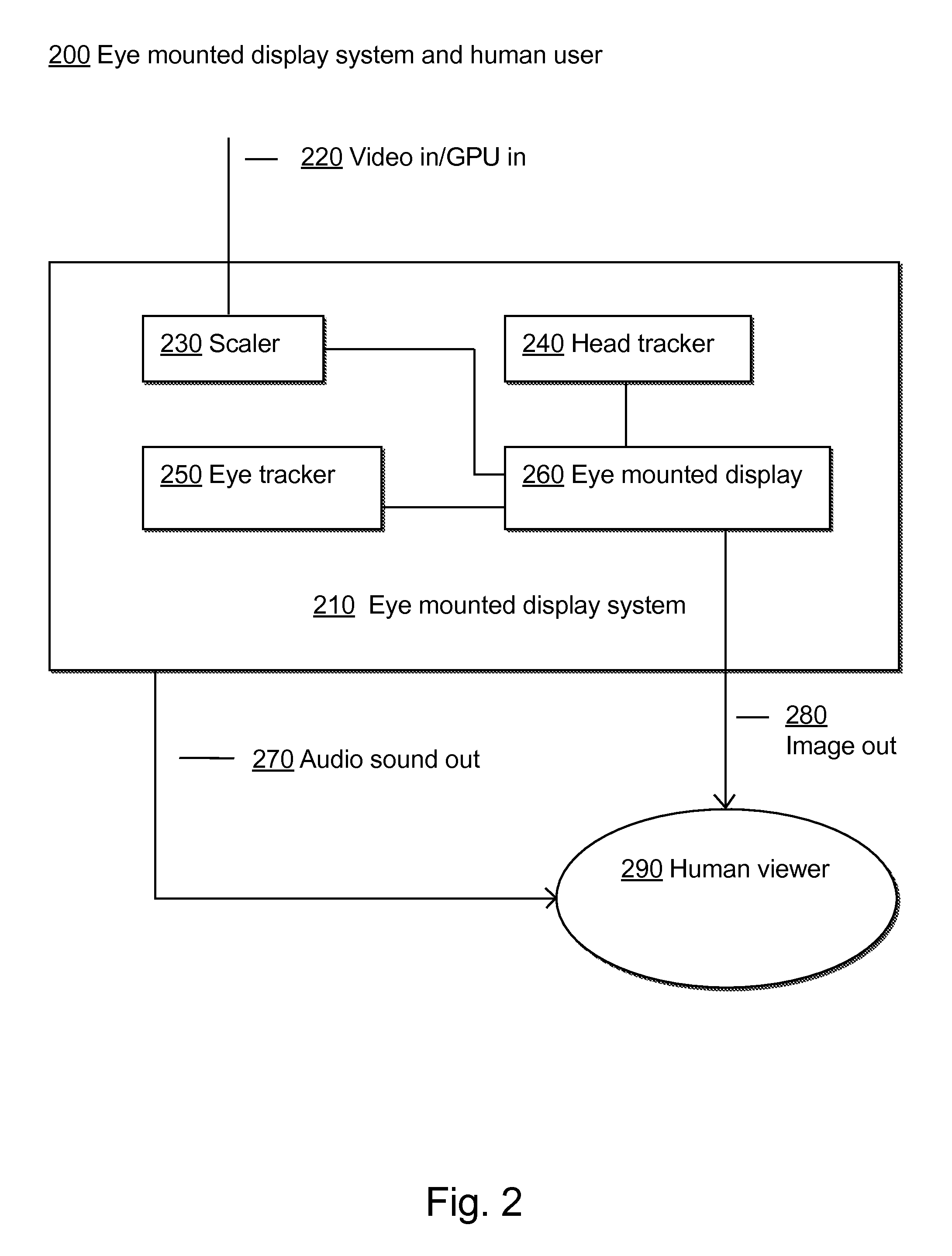Variable Resolution Eye Mounted Displays
a display and variable resolution technology, applied in the field of visual display technology, can solve the problems of limiting the scale of information and context available, increasing power requirements as well as costs, and limiting the convergence of physical display size,
- Summary
- Abstract
- Description
- Claims
- Application Information
AI Technical Summary
Benefits of technology
Problems solved by technology
Method used
Image
Examples
Embodiment Construction
Outline
[0108]I. Overview
[0109]II. Anatomical and Visual Definitions[0110]II.A. Terminology[0111]II.B. Retinal Definitions[0112]II.C. Axis: Classical Optical vs. the Human Eye[0113]II.D. Important Retinal Neural Cell Types
[0114]III. Mathematical Definitions[0115]III.A. Mathematical Conventions[0116]III.B. Hexagonimania[0117]III.C. Mathematical Definitions of the ViewSphere and Related Concepts[0118]III.D. Scale Changes between the ScreenSurface and ViewSpaceVS[0119]III.E. Re-Definition of Resolution
[0120]IV. The Variable Resolution Nature of the Human Eye
[0121]V. Optical Function Required for Eye Mounted Displays
[0122]VI. Optical Function of a Contact Lens Display
[0123]VII. Variable Resolution Mappings for Contact Lens Displays
[0124]VIII. Means to Display Variable Resolution Pixels[0125]VIII.A. Pixel Tilings Overview[0126]VIII.B. Projector Tilings[0127]VIII.C. Pixel Tilings Details[0128]VIII.D. Sub-Sampling of Color for an Eye Mounted Display[0129]VIII.E. Computer Graphics Real-Time ...
PUM
 Login to View More
Login to View More Abstract
Description
Claims
Application Information
 Login to View More
Login to View More - R&D
- Intellectual Property
- Life Sciences
- Materials
- Tech Scout
- Unparalleled Data Quality
- Higher Quality Content
- 60% Fewer Hallucinations
Browse by: Latest US Patents, China's latest patents, Technical Efficacy Thesaurus, Application Domain, Technology Topic, Popular Technical Reports.
© 2025 PatSnap. All rights reserved.Legal|Privacy policy|Modern Slavery Act Transparency Statement|Sitemap|About US| Contact US: help@patsnap.com



